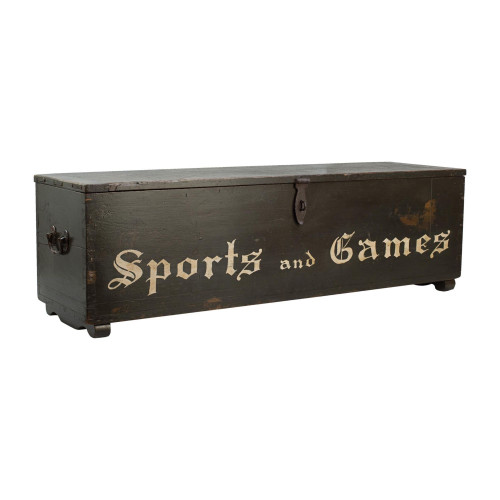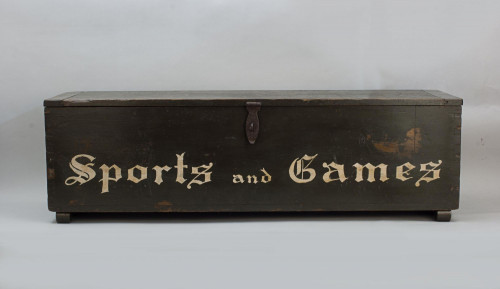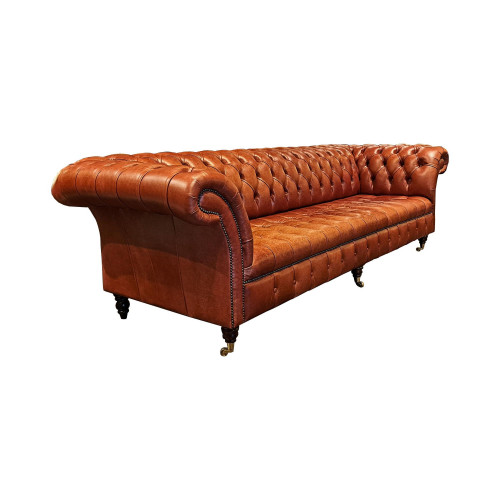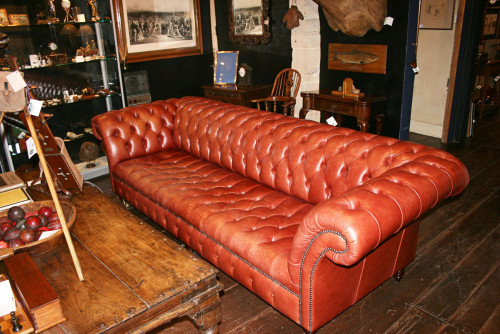- Home
- Furniture
- Chests, Coffers & Cases
- 19th Century Leather Trunk, Earl Clare
19th Century Leather Trunk, Earl Clare
19th Century Leather Trunk, Earl Clare
27494
Antique Camphor Wood Chest, Trunk.
A good sized campaign chest the former property of John FitzGibbon, 2nd Earl of Clare. The campaign trunk with a camphorwood carcass covered in black leather with brass straps, corners and stud work. There are two large brass carry handles, one at both ends, and a lock with no key. The trunk is very high quality and made of Camphor wood for its strong aromatic odour used for insect repellent, flea-killing and natural moth ball qualities. The interior is perfectly clean and would make a good storage box for a bedroom or a very usable coffee table. The brass plaque on the lid is engraved 'Earl Clare', there is another plaque on the front engraved 'No.2'.
From Wikipedia:-
John FitzGibbon, 2nd Earl of Clare KP GCH PC (10 July 1792 - 18 August 1851) was the son of John FitzGibbon, 1st Earl of Clare and his wife, Anne, sister of Thomas Whaley (politician). He succeeded to the titles of Baron FitzGibbon in the Peerage of Great Britain and Earl of Clare in the Irish Peerage in 1802. FitzGibbon was educated at Harrow School and Christ Church, Oxford, graduating in 1812. From 1820 to 1851, he was active in estate management when not in public office, and from 1820 onwards was active in the House of Lords. In 1830 he became a Privy Councillor, and later the same year was appointed Governor of Bombay, serving until 1835. In 1835 he was invested as a Knight Grand Cross of the Royal Guelphic Order, was a member of the Royal Asiatic Society from 1839 and invested as a Knight of St Patrick in 1845. He was Deputy Lieutenant of the County of Limerickfrom 1846 to 1849 and afterwards Lord Lieutenant of the City of Limerick for the remainder of his life.
He married Elizabeth Burrell, daughter of Peter Burrell, 1st Lord Gwydwyr. The couple lived apart, Lady Clare moving to the Isle of Wight where she built a Catholic church at Ryde and a Priory at Carisbrooke. She is buried at Mountjoy Cemetery in Carisbrooke, Isle of Wight, next to her close companion Miss Charlotte Elliot. His remains are deposited in Catacomb B [Vault63] in Kensal Green Cemetery, London where his cap of maintenance may be seen inside the vault.
Earl of Clare was a title of British nobility created three times: once each in the peerages of England, Great Britain, and Ireland.
The title of Earl of Clare was formally created by letters patent in the Peerage of England on 2 November 1624 for John Holles. The title became extinct upon the death the fourth Earl in 1711. The next creation of the Earl of Clare was in the Peerage of Great Britain for Thomas Pelham, nephew and heir of the last earl of the first creation. He had been adopted by his uncle and assumed the arms and surname of Holles. He was a significant statesman during the early Georgian era, and he served as the first Lord of the Treasury, among other roles. He was created Viscount Pelham of Houghton and Earl of Clare on 26 October 1714. The following year, on 2 August 1715, he was further created Marquess of Clare and Duke of Newcastle, with remainder to his brother the Rt. Hon. Henry Pelham. In 1756, he was created Duke of Newcastle Under Lyne with remainder to his nephew, Henry Fiennes-Clinton, 9th Earl of Lincoln. His brother predeceased him, leaving no male heirs, and at his death in 1768, the titles of Earl of Clare and Marquess of Clare again became extinct, but he was succeeded by his nephew as Duke of Newcastle Under Lyne. The title was again created, in the Peerage of Ireland, in 1795 for John FitzGibbon, 1st Viscount FitzGibbon, the Lord Chancellor of Ireland. He had already been created Baron FitzGibbon, of Lower Connello in the County of Limerick, in 1789, and Viscount FitzGibbon, of Limerick in the County of Limerick, in 1793. These titles were also in the Peerage of Ireland. In 1799 he was made Baron FitzGibbon, of Sidbury in the County of Devon, in the Peerage of Great Britain. He was succeeded by his eldest son, the second Earl. He served as Governor of Bombay from 1830 to 1834. He died childless and was succeeded by his younger brother, the third Earl. He represented County Limerick in the House of Commons and served as Lord Lieutenant of County Limerick. Lord Clare's only son, John Charles Henry FitzGibbon, styled Viscount FitzGibbon, was killed in action during the Battle of Balaclava where he charged with the 8th King's Royal Irish Hussars. On Lord Clare's death in 1864 the peerages became extinct.
Dimensions:
1800-1849
C. 1820
Camphorwood
Excellent
Thank you for your enquiry.
We will get back to you soon.
Please create wishlist to add this item to
RELATED ITEMS




































